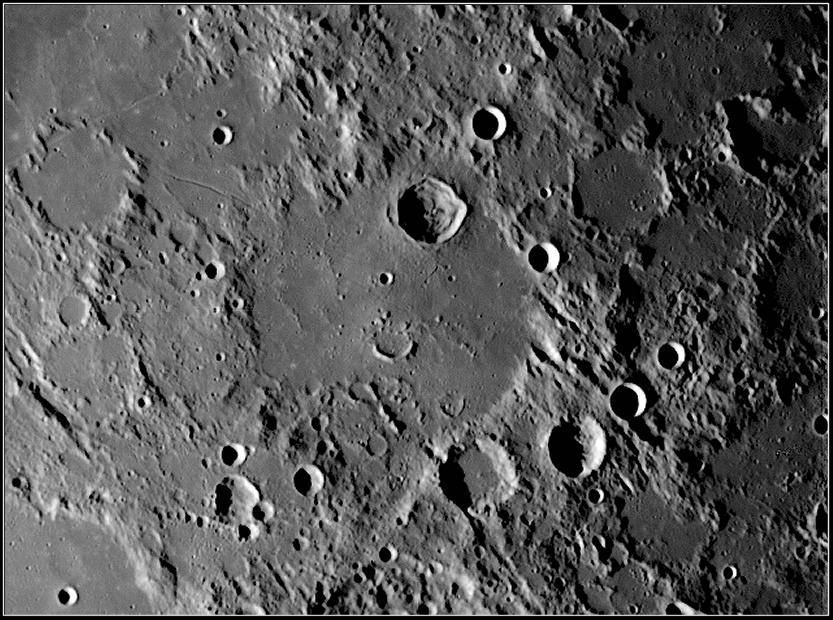
image by Damian Peach
Hipparchus used to be a grand crater, 150 km across with massive terraces and a complex of central peaks. But now its rim is lowered and scoured, and the floor is nearly filled with a relatively smooth bright material. Such bright plains used to be a matter of great debate - were they some sort of non-mare (because they aren’t dark) volcanism or fluidized ejecta from Imbrium and perhaps older basins? And more recently another type of bright smooth plains was recognized - mare material dusted with a veneer of basin ejecta. But the impact craters cutting into the floor of Hipparchus are not surrounded with a dark halo of pulverized basalt (dark halo craters of impact origin) so the dusted mare hypothesis isn’t likely. And there is no compelling evidence that non-mare volcanism was extensive, so since the end of the Apollo era the floor of Hipparchus and many other bright plains are interpreted as impact basin ejecta. But Damian’s broad view makes me doubt that hypothesis. Just look at it. Hipparchus is a smooth hole in the middle of a roughly textured area that is widely cut by furrows that point angrily back toward Imbrium. If that floor had been there when the furrows (actually secondary crater chains) were smacked down across the surface they would still be there. Actually, if you look closely, with a little imagination, you can see some elongated buried features - but they are under the smooth plains material. The Imbrium secondary crater gouge chains (perhaps the basin equivalent to rays) have been buried by the fluidized ejecta that supposedly came from formation of the same basin. I doubt it. The floor of Hipparchus so obviously interrupts the Imbrium debris that it must be younger. Perhaps it came from a later phase of ejecta than the gouges (it's possible), or perhaps it is some unknown form of volcanism (is it possible?). Before you leave this scene look at 30 km wide Horrocks bulging out the northeast corner of Hipparchus’ floor. Notice the small arc of a rim sticking out under Horrocks? This is all that’s left of a crater that was nearly obliterated - a not so rare example of a bigger crater sitting on top of a smaller one.
Technical Details:
October 13, 2006. C14 Schmidt Cassegrain + Lumenera LU075M CCD camera.
Related Links:
Rükl chart 44 & 45
Damian’s website
A closeup view
Yesterday's LPOD: Image Planning & Presentation
Tomorrow's LPOD: More Steep Places - This Time on a Limb
COMMENTS?
Register, Log in, and join in the comments.



